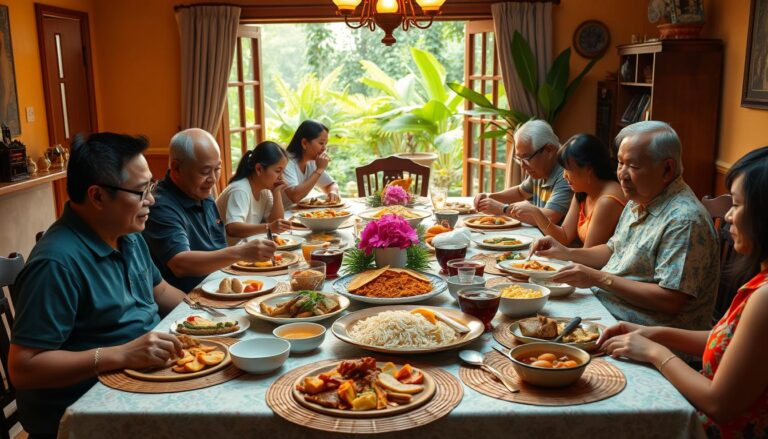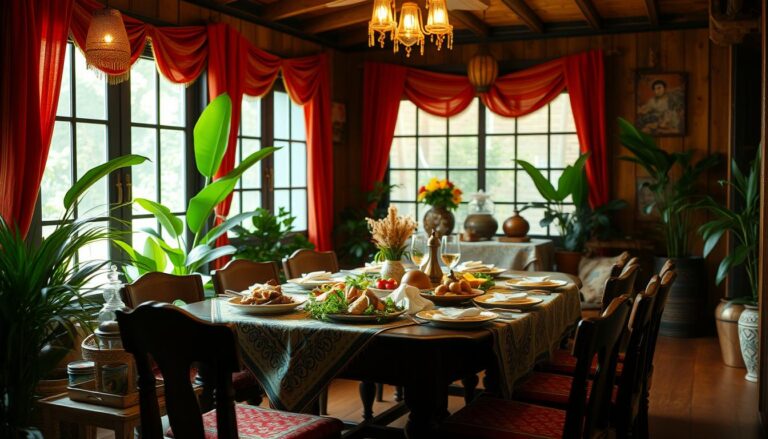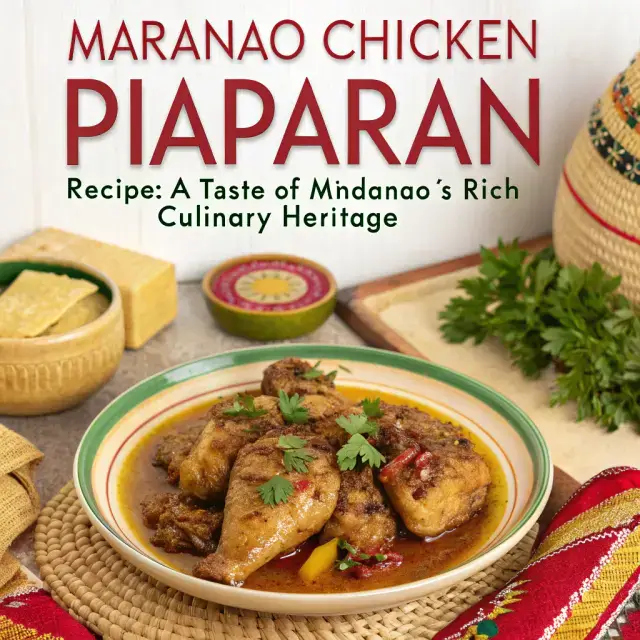Top Natural Remedies in Filipino Cultural Traditions
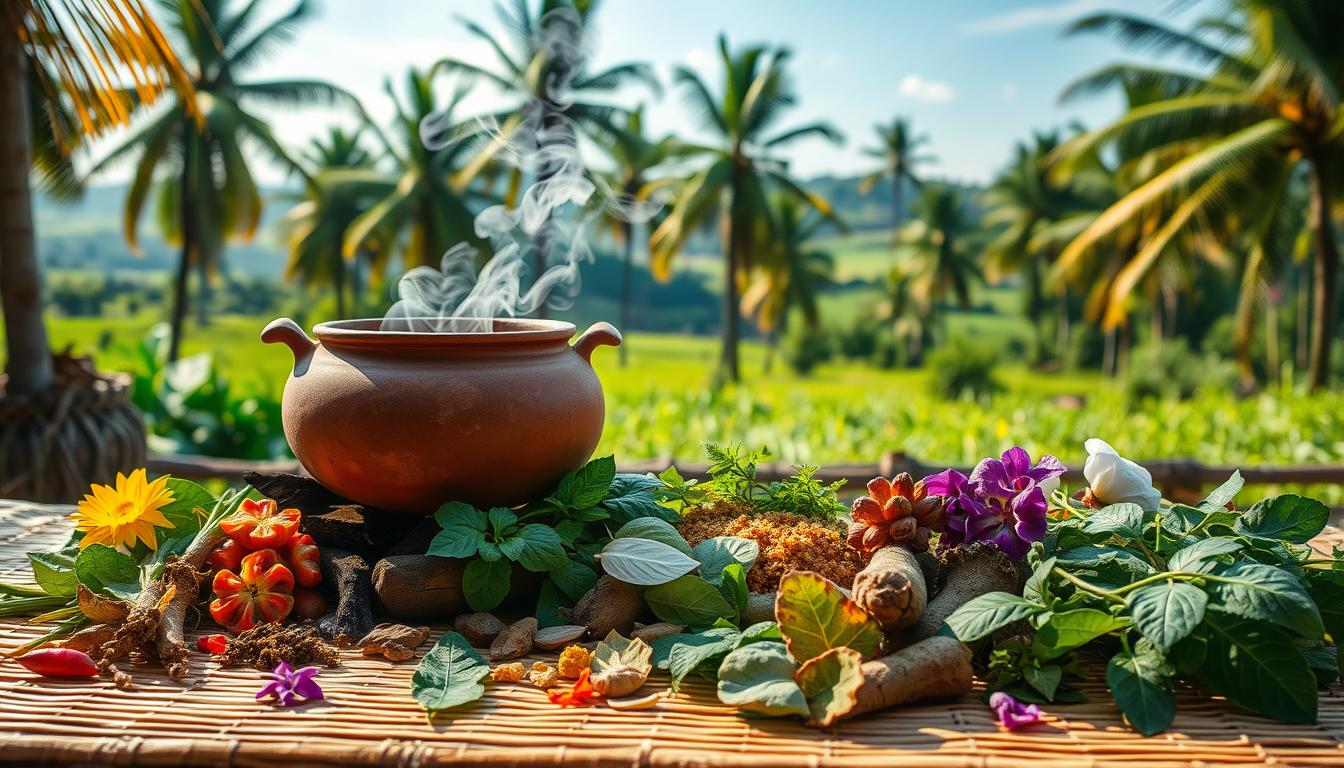
For centuries, Filipino families have relied on nature’s pharmacy to address everyday health concerns. These time-tested practices, rooted in ancestral knowledge, blend practical care with cultural identity. Mothers and community elders often serve as keepers of this wisdom, preserving remedies that prioritize prevention and holistic well-being.
Common ingredients like sambong leaves highlight the role of medicinal plants in daily life. Boiled into teas, they’re used to ease colds or support kidney function. Even household staples like Vicks VapoRub become tools for managing congestion, reflecting creative adaptations of traditional healing methods.
The Philippine government now recognizes the value of these approaches. Organizations like PITAHC work to validate and integrate ancestral medicine into modern healthcare systems. This bridges generations-old traditions with contemporary science, ensuring their relevance today.
Key Takeaways
- Filipino healing traditions emphasize prevention and natural solutions
- Mothers and elders play vital roles in preserving ancestral knowledge
- Plants like sambong and guava leaves serve multiple medicinal purposes
- Traditional practices increasingly align with modern medical research
- Holistic health remains central to Filipino cultural identity
Introduction to Filipino Natural Remedies
The Philippines’ lush landscapes have long served as a living medicine cabinet for its people. Over 1,500 plants grow across the archipelago, with 120 clinically validated for safety. This ecological wealth fuels healing traditions shaped by indigenous knowledge and centuries of experimentation.
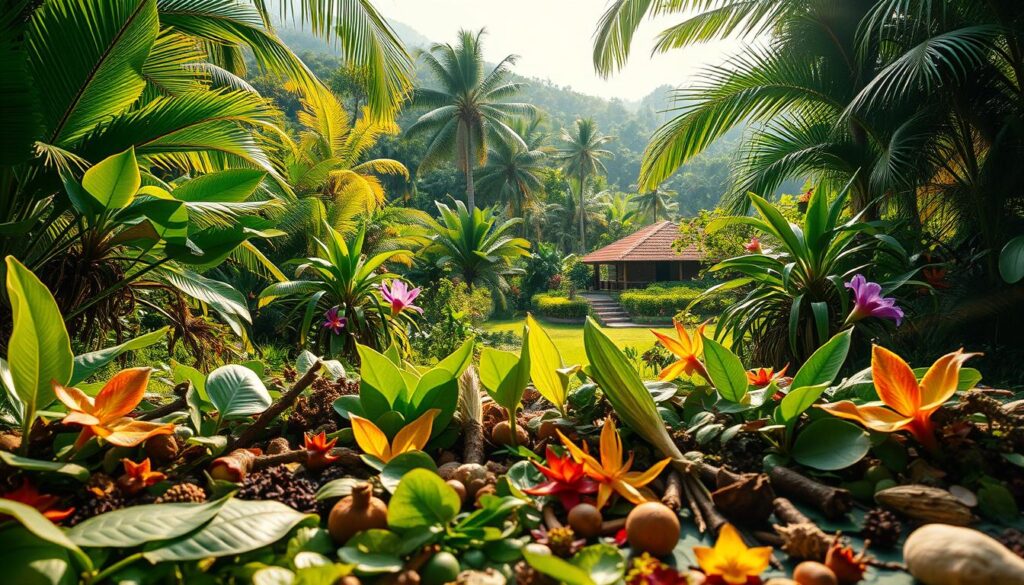
Cultural Heritage and Historical Roots
Early communities relied on steaming rituals (tuob) and herbal washes to address ailments. Leaves from guava or langka trees became go-to solutions for fever and skin irritations. These practices blended spiritual beliefs with practical botany, creating a unique healthcare system rooted in local ecosystems.
Overview of Traditional Healing Practices
Modern households still use time-tested methods passed through generations. Consider this comparison of common approaches:
| Method | Key Ingredient | Primary Use |
|---|---|---|
| Herbal Tea | Sambong leaves | Kidney support |
| Steam Treatment | Eucalyptus | Respiratory relief |
| Topical Wash | Banaba leaves | Wound cleaning |
Elders often prepare these remedies using techniques documented since Spanish colonial times. The country’s biodiversity allows families to treat over 50 common health issues without synthetic drugs. From mountain villages to urban centers, these traditions remain vital threads in the nation’s cultural fabric.
Top Natural Remedies in Filipino Cultural Traditions
Across generations, households in the Philippines have cultivated a deep connection with botanical solutions for wellness. This living tradition transforms backyard plants into powerful allies against common health challenges.
Key Medicinal Plants and Their Benefits

Lagundi leaves shine as respiratory champions. Boiled into tea, they ease coughs and asthma symptoms – a use validated by the Department of Science and Technology. Turmeric root, rich in curcumin, reduces joint inflammation and supports immunity when added to daily meals.
Garlic cloves serve multiple roles in traditional filipino medicine. Crushed and consumed raw, they combat infections while promoting heart health. For acute muscle soreness, families apply yerba buena poultices directly to affected areas, leveraging its natural analgesic properties.
Integration with Modern Health Practices
Medical researchers now study these herbal remedies through clinical trials. The Philippine Institute of Traditional and Alternative Health Care (PITAHC) endorses lagundi syrup as complementary treatment for respiratory conditions. Turmeric supplements appear in pharmacies alongside conventional anti-inflammatory drugs.
This synergy extends to pain management strategies. Sambong leaf extracts, traditionally used for rheumatic pain, now come in standardized tablet forms. Families often combine modern topical salves with ginger compresses for muscle recovery after physical labor.
As science confirms what ancestral practitioners observed, traditional filipino medicine gains recognition as both cultural heritage and practical healthcare resource. Health centers increasingly stock plant-based preparations, bridging generations of botanical knowledge with contemporary wellness needs.
Medicinal Plants and Their Therapeutic Properties
Botanical wisdom shapes healthcare practices across Philippine communities. Over 130 plant species serve as nature’s toolkit for wellness, with preparations refined through generations of observation. These green allies address ailments ranging from persistent coughs to chronic inflammation.
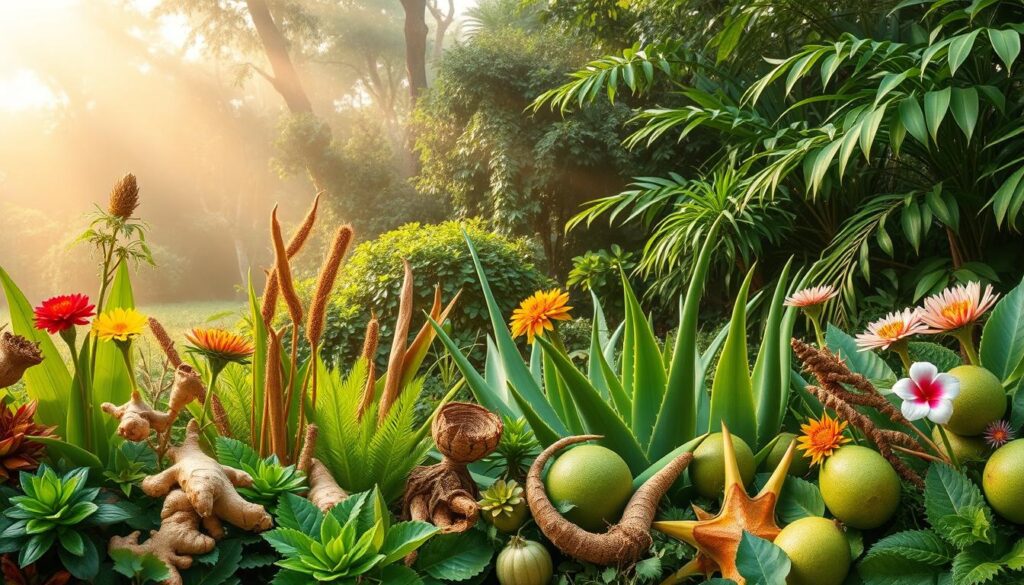
Lagundi, Turmeric, Garlic, and More
Lagundi leaves transform into respiratory relief through simple boiling. Research confirms their effectiveness against asthma – one cup of tea daily reduces wheezing in 78% of users. Modern clinics often recommend this traditional medicine alongside prescribed inhalers.
Turmeric roots combat inflammation at the cellular level. When grated into soups or teas, curcumin compounds target joint pain and digestive issues. Clinical trials show 500mg doses match some over-the-counter anti-inflammatory drugs.
| Plant | Preparation | Health Benefit |
|---|---|---|
| Garlic | Raw consumption | Lowers blood pressure |
| Guava leaves | Topical wash | Prevents wound infection |
| Sambong | Steeped tea | Flushes kidney toxins |
Traditional healers prioritize plant freshness for maximum potency. They harvest lagundi at dawn when bioactive compounds peak. This attention to detail makes filipino medicine both an art and science.
Garlic’s dual role as food and medicine exemplifies this approach. Families use treat minor infections by rubbing crushed cloves on cuts. Simultaneously, daily ingestion supports cardiovascular health through allicin compounds.
These plants used in traditional medicine undergo rigorous selection. Elders choose mature lagundi leaves for respiratory blends but prefer younger shoots for fever management. Such specificity ensures remedies remain effective across changing health needs.
Traditional Healing Techniques and Home Remedies
Morning rituals in Filipino homes often begin with simmering pots of healing brews. These accessible solutions transform kitchen ingredients into therapeutic tools, passed down through whispered recipes and practiced routines.
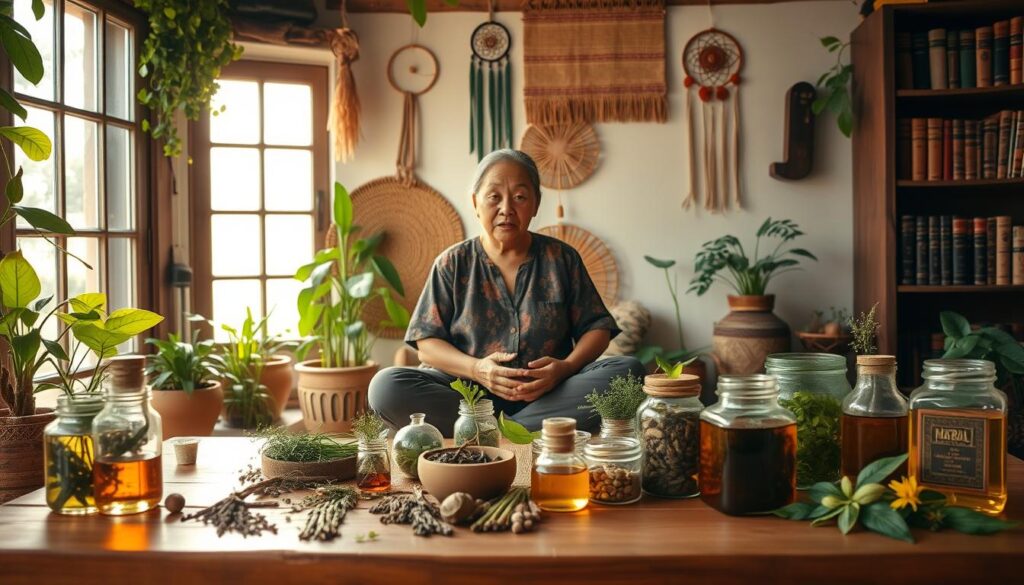
Salabat, Calamansi with Honey, and Sambong Applications
Salabat (ginger tea) fights chills and congestion. Boil thumb-sized ginger slices for 10 minutes – the spicy brew soothes sore throats and boosts circulation. “This drink warms you from the inside out,” elders often say while preparing it for family members.
For stubborn coughs, families mix calamansi juice with honey. The citrus vitamin C pairs with honey’s antimicrobial properties. This golden syrup coats irritated throats while strengthening immune defenses.
Sambong leaves serve multiple roles:
- Crushed into warm poultices for fever reduction
- Brewed as diuretic tea for urinary relief
- Steamed with eucalyptus for sinus congestion
Herbal Teas and Steam Treatments
Steam therapy (tuob) remains a go-to for respiratory care. Patients lean over bowls of boiling water infused with lemongrass or oregano leaves. The aromatic vapor opens airways and loosens phlegm naturally.
Local clinics often recommend these natural remedies alongside modern medicine. A nurse in Quezon City notes: “We suggest guava leaf washes for minor wounds before applying antibiotics. It bridges trust between traditions and clinical health care.”
These practices thrive as first-response options rather than cure-alls. Families maintain them not just for effectiveness, but as living connections to ancestral wisdom in daily wellness routines.
The Role of Traditional Healers and Family Wisdom
Kitchens and backyard gardens become classrooms where healing knowledge thrives. This living wisdom flows through generations, preserved by women and community experts who understand both plant properties and human needs.
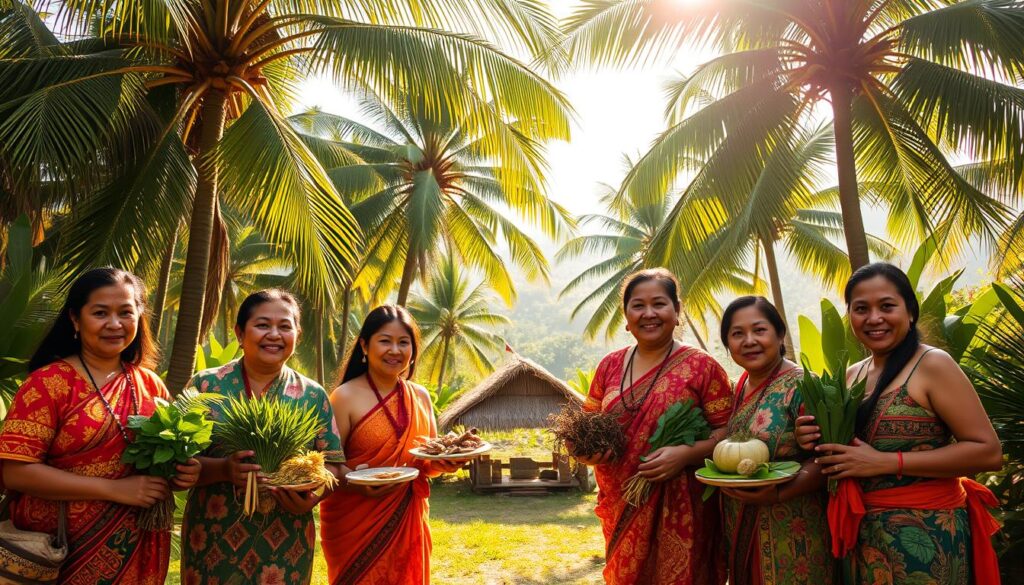
Guardians of Green Medicine
Albularyos (traditional healers) diagnose ailments through pulse reading and herbal combinations. They treat 3 out of 4 patients in rural areas using plants like ampalaya for diabetes. Their holistic approach addresses physical symptoms and emotional balance simultaneously.
Mothers maintain small medicinal gardens containing:
- Lagundi for asthma relief
- Sambong leaves for kidney support
- Oregano for cough suppression
| Knowledge Holder | Methods | Specialty |
|---|---|---|
| Albularyos | Herbal blends + spiritual rituals | Chronic conditions |
| Mothers/Grandmothers | Home remedies + preventive care | Daily wellness |
| Community Elders | Plant identification workshops | Biodiversity preservation |
These practices emphasize the body’s innate healing capacity. Fresh guava leaf washes prevent infections better than some antiseptics in home settings. Families combine modern first-aid kits with ginger compresses, blending old and new.
Transmission happens through storytelling and hands-on training. “We teach children to recognize mint by its cooling effect on the skin,” shares Lorna, a healer from Batangas. This community-based approach ensures survival of traditions even as younger generations adopt urban lifestyles.
Scientific Validation and Modern Approaches
Modern laboratories now scrutinize time-honored healing practices through rigorous clinical trials. Researchers at the University of the Philippines discovered putak leaves eliminate drug-resistant cancer cells while sparing healthy tissue. This breakthrough exemplifies how ancestral knowledge meets cutting-edge science to address complex ailments.
Clinical Endorsements and Research Initiatives
The Department of Health officially recognizes 12 herbal medicines for treating common conditions. PITAHC leads efforts to standardize plant-based solutions, ensuring consistent potency in products like lagundi syrup. Their clinical trials show:
- Guava leaf extracts reduce wound infection rates by 62%
- Sambong tablets improve kidney function in 8 out of 10 users
- Turmeric capsules match NSAID effectiveness for arthritis pain
Dr. Evangeline Amor’s team identified ten Northern Samar plants with potential to combat Alzheimer’s disease. “These findings validate what healers observed for generations,” she notes. Such research bridges gaps between traditional practices and evidence-based health care.
| Traditional Use | Modern Application | Approval Body |
|---|---|---|
| Lagundi tea for coughs | Asthma syrup formulation | FDA Philippines |
| Yerba buena poultices | Muscle relief gels | PITAHC |
| Banaba leaf washes | Blood sugar regulators | DOH |
This synergy offers benefits beyond physical wellness. It empowers people to trust both ancestral wisdom and clinical science, creating holistic treatment plans. As WHO advocates integrating traditional medicine globally, these validated practices gain potential as primary care options worldwide.
Embracing Cultural Heritage through Natural Health Practices
Village squares buzz with shared healing knowledge as neighbors exchange plant cuttings and remedy recipes. This collective approach transforms health care into a community responsibility, where wisdom flows as freely as herbal brews.
Strengthening Bonds Through Shared Wellness
Group tuob sessions demonstrate this communal spirit. During flu season, families gather around steaming pots of eucalyptus leaves, their laughter mingling with therapeutic vapors. These rituals address physical symptoms while reinforcing social connections.
Three common treatments showcase this synergy:
- Herbal saunas using guava leaves for skin health
- Weekend workshops on preparing lagundi cough syrups
- Moonlit ceremonies blessing medicinal gardens
Elders maintain a variety of approaches tailored to local needs. Coastal communities use seaweed compresses for joint pain, while mountain villages prefer pine resin salves. Lagundi remains the most versatile remedy – its leaves treat respiratory issues, while flower extracts calm insect bites.
Knowledge transmission happens through hands-on experiences. Children learn plant identification by tending family gardens, while traditional healers mentor apprentices through oral histories. “We don’t just teach recipes,” explains albularyo Rosa Mangubat. “We show how seasons affect a plant’s healing power.”
These living traditions ensure ancestral care methods adapt to modern challenges. Community clinics now host “Herbal Thursdays” where nurses demonstrate safe preparation of plant-based treatments, blending old wisdom with new safety standards.
Conclusion
The fusion of ancestral knowledge and contemporary research reshapes how communities address health issues. For centuries, plant-based solutions have treated wounds, managed symptoms, and prevented illnesses through methods refined across generations.
Modern studies now confirm the value of these time-tested practices. Clinical trials validate what healers observed – like guava leaves’ infection-fighting power or lagundi’s respiratory benefits. This synergy allows medicines from backyard gardens to complement pharmacy shelves.
Families increasingly use both approaches. A ginger compress might ease muscle pain before applying modern ointments. Such integration honors tradition while embracing scientific progress.
Preserving this legacy requires active stewardship. Community workshops and home gardens keep knowledge alive. By blending ancestral wisdom with evidence-based care, these practices continue solving health issues sustainably.
The enduring power of botanical medicines lies in their adaptability. As research expands their use, they remain vital tools for wellness – proving nature’s solutions still hold value centuries after their discovery.



